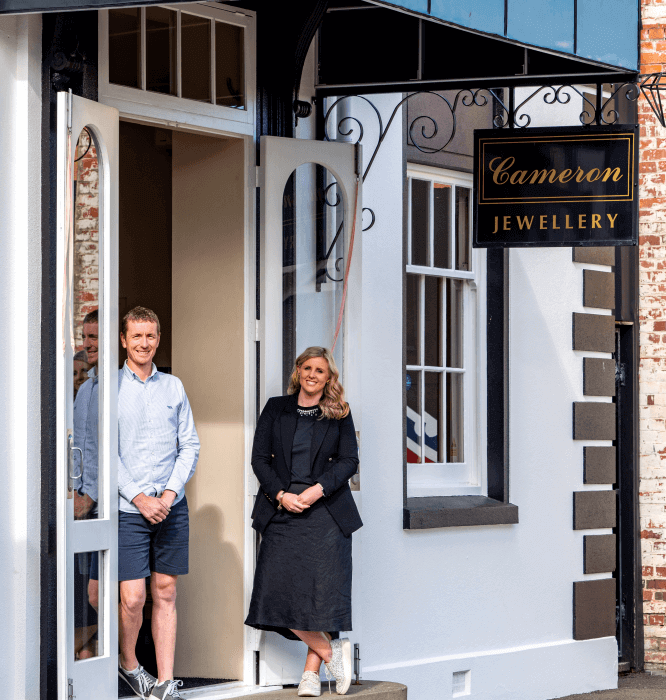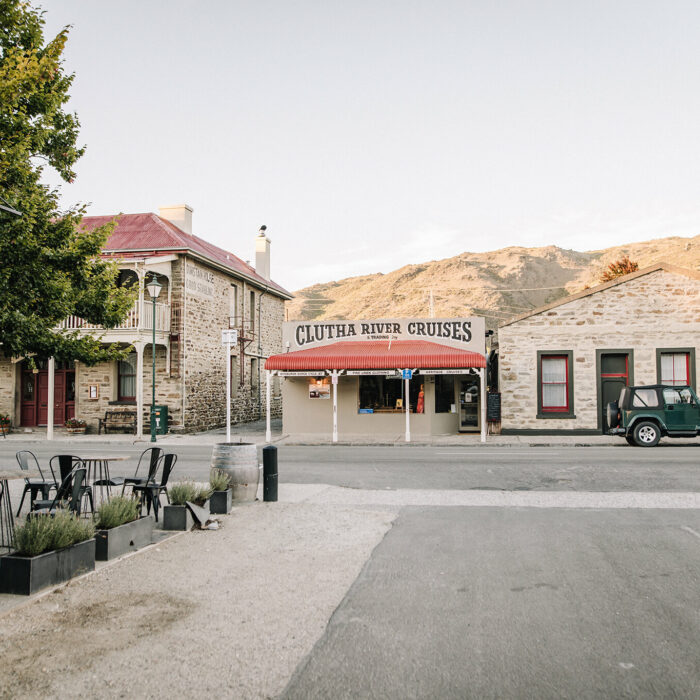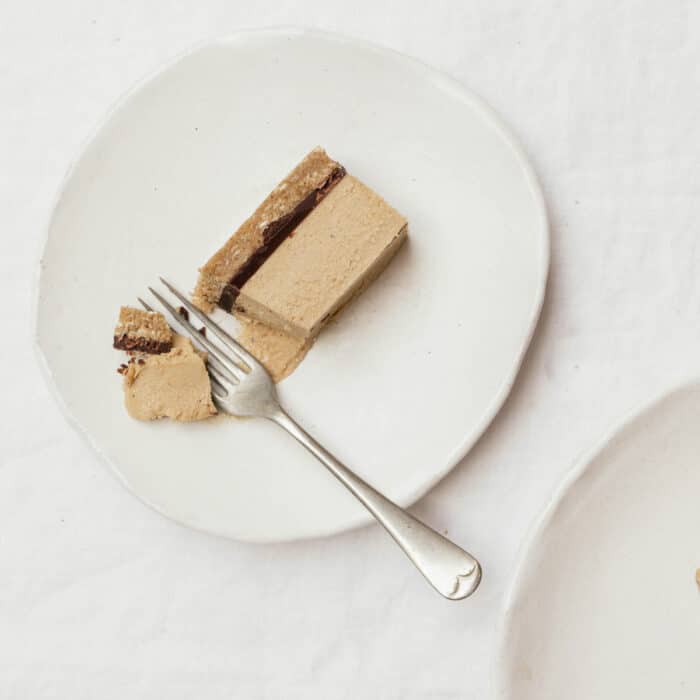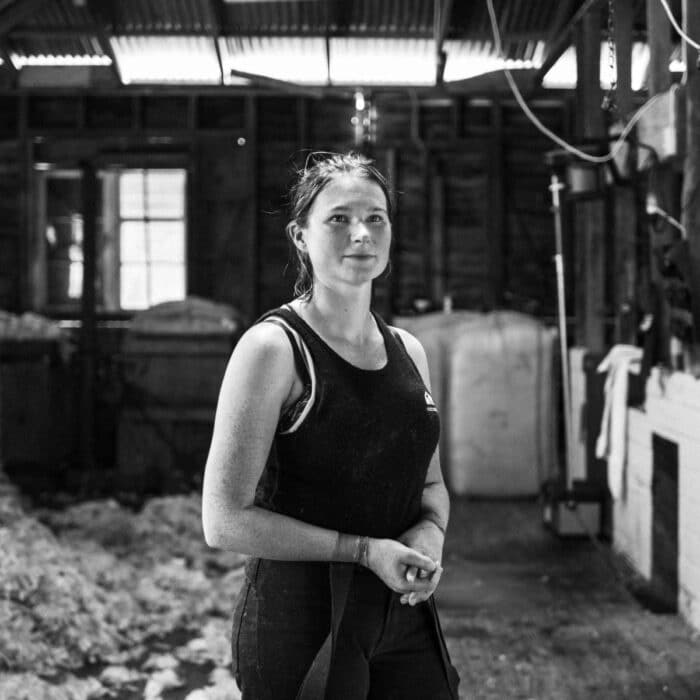13 April 2024
Wearing Their Kauae
Ngā Hononga. Common Threads.
writer: ARPÉGE TARATOA (NGĀI TE RANGI, NGĀTI RAUKAWA, NGĀ PUHI, NGĀTI RĀRUA)
photographer: NAOMI APORO-MANIHERA (NGĀTI KAHUNGUNU, RANGITĀNE, NGĀPUHI, TE ARAWA, NGĀTI WAHIAO, NGĀTI TOA, NGĀTI APA KI TE RĀ TŌ, NGĀI TAHU) & TERRY TOKI (RAROTONGA)
Moko kauae is the chin tattoo that has been worn by wāhine Māori for centuries. Whilst it was nearly lost, alongside many other taonga Māori, there has been a bold resurgence of the tradition in recent years, and many women of Māori descent are undertaking personal journeys to receive theirs. For Mona-Pauline Mangakāhia-Bajwa, the desire to mau moko was reaching a peak when she approached her sister, Challen Wilson, and their mother, Darcia Mangakāhia, about joining her –but it wasn’t a simple process. In fact, it took nearly two years from their initial kōrero for all three wāhine to commit as a collective.
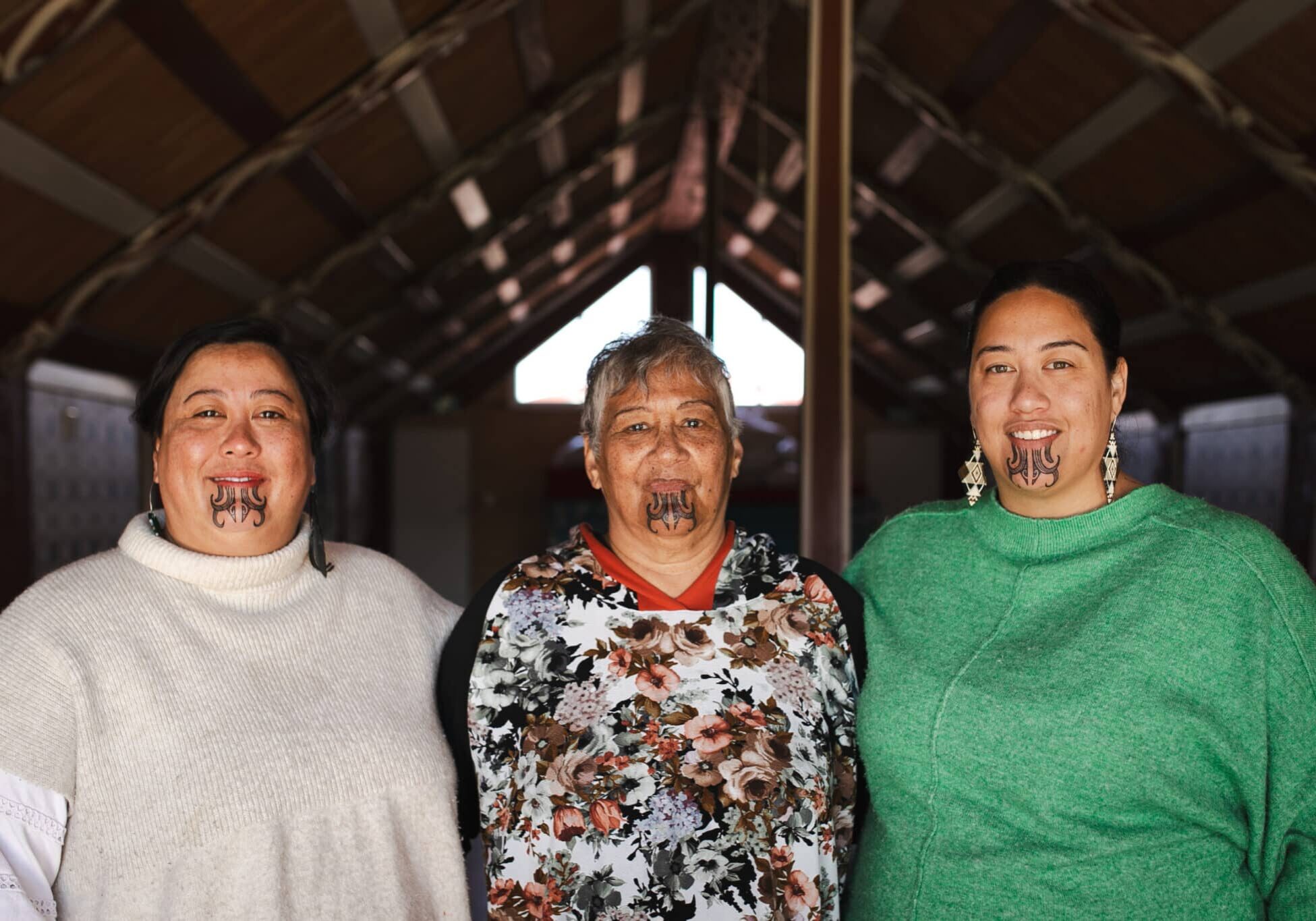
Challen, Darcia and Mona-Pauline wearing their moko kauae. “One of the things for me is that the children in our whānau don’t just get to see it on one, but three of us,” Darcia says. Mona-Pauline adds, “Even though mum and Challen don’t speak te reo, there’s lots of other parts of their lives that are rich in our culture – where others probably don’t get the opportunity to have access to or be provided those spaces.”
On 28 October 2023, Mona-Pauline, Darcia and Challen received their moko kauae. The mokopapa ceremony was at Kererū Marae, the resting place of Mona-Pauline and Challen’s late father and Darcia’s beloved husband. It was the culmination of their personal journeys, shared mamae and whānau aspirations. “Each of us has our own motivations and our own way, and for our own reasons – but I think that goes back to our identities,” Mona-Pauline says. “Each of us is a unique part of our collective as a whānau, because we’ve each walked quite different paths. But there are synergies across the different spaces that we walk in.” Reflecting on the mokopapa, and the unique path that led each of them to it, Darcia, Challen and Mona-Pauline explore how multifaceted it is to be a wahine Māori exploring her identity in this day and age.
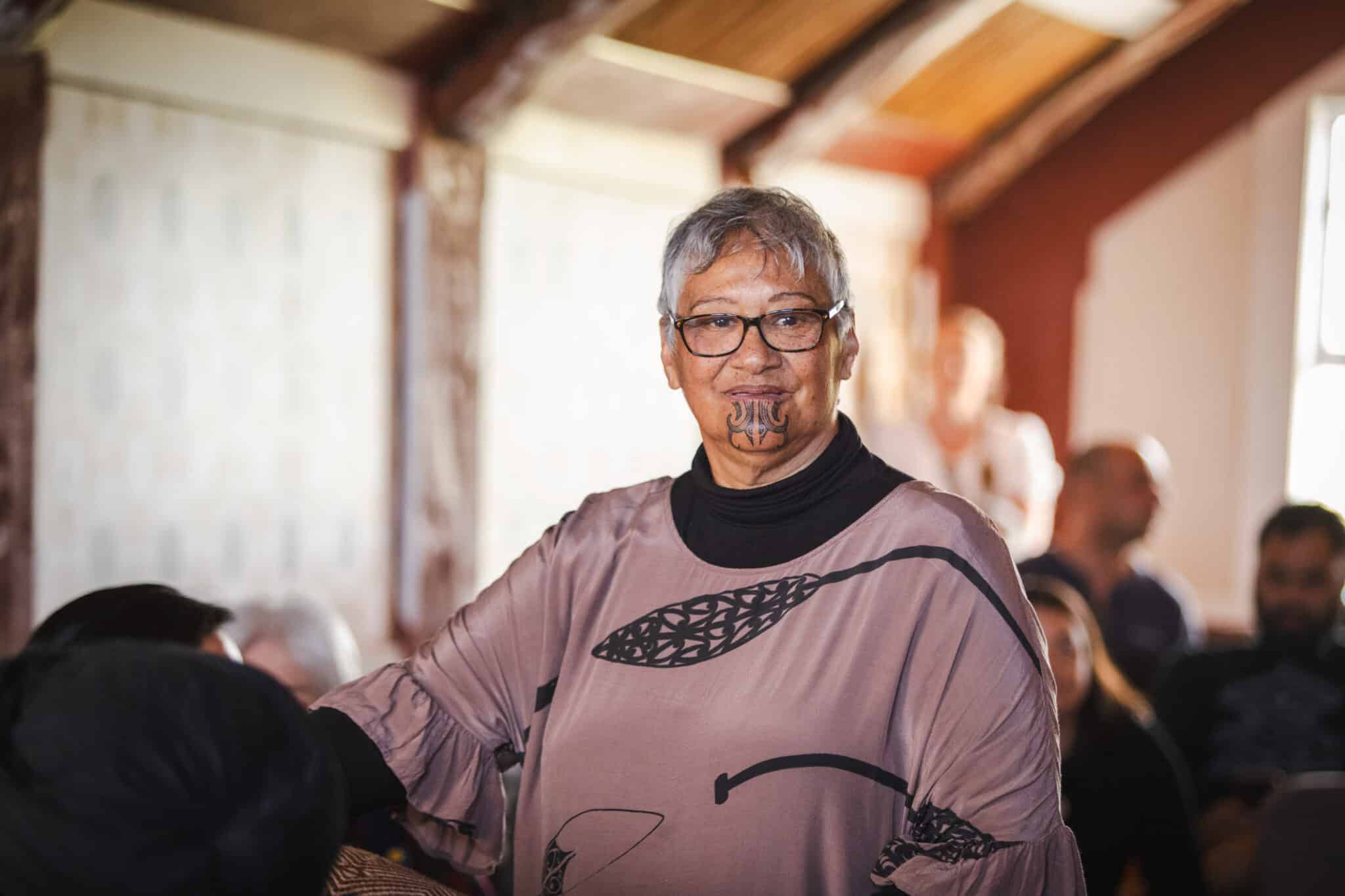
DARCIA MANGAKĀHIA, 67
Kāi Tahu, Ngāti Kuia, Ngāti Raukawa, Rangitāne, Ngāti Koata, Te Āti Awa, Ngāti Kahungunu
I was born in Foxton, and there were a lot of Māori who lived there, but I wasn’t raised in te ao Māori. I didn’t have te reo around me, I didn’t even hear my grandparents speaking it unless it was a specific kupu Māori for certain things. We all lived in one house mostly – my grandmother had sixteen children and all of the family would share the house, so we knew what whanaungatanga was! My grandmother was the leader, that māreikura role was hers in making sure her whānau came together often. And Koro Pine – that’s what everyone called him and knew him as – used to go and collect kai from the awa across the road from where we lived. We may not have had karakia and all of that, but we did have a lot of other Māori values.
When I went through school, to me, everyone was the same. I didn’t see anyone differently because I had multiple friends who were from all different backgrounds. I did see moko kauae, but I never asked the question – I just thought it was really different. My grandmother didn’t have her moko kauae and it was never anything we talked about.
It wasn’t until I shifted to Woodville, after I met Mona-Pauline and Challen’s father Hohepa, that I started to think about me being Māori. I met him when I was nineteen, and pretty much from that point we were on the road because he was a shearer. He didn’t speak Māori either, but by the end of his life, he did. He was really comfortable in who he was, and he didn’t care if he said something wrong, he’d just speak it. For him, he was Māori, and he was all about it – he embraced it; whereas I had a bit of shyness, I didn’t want to get it wrong.
Challen didn’t get to learn, she was too old when the kōhanga reo movement came about, but Mona-Pauline did. I should have learnt it when Mona did, but we had to work then, we couldn’t just stop working as we owned a bus business. When she was nearly five – she was still at kōhanga at the time – I took her to see my cousin, Huataki, and he was taken aback. He said, “Whoa. She’s been taught the native tongue,” and that’s when we knew how important it was. I think from that day on that’s when Hohepa wanted to learn to speak.
I wasn’t worried about learning then, though I still want to be able to communicate, especially now my moko are here. But there’s different things I’ve done – like later in life I went to Te Ataarangi and took up weaving to access those different parts of my culture. Funnily enough, when Mona approached me and asked about receiving our kauae together, I didn’t even hesitate really – I just said, ‘Yes, I will.’ As a whānau though, I knew Challen had a lot to think about, because you know, they’ve had different lives and we needed to make sure it would work for all of us.
CHALLEN WILSON, 45
Kāi Tahu, Ngāti Kuia, Ngāti Raukawa, Rangitāne, Ngāti Koata, Te Āti Awa, Ngāti Kahungunu, Ngāti Marutuahu, Ngāti Tamaterā, He Hononga ki TeRarawa
I tried to learn around high-school age, that’s where the language learning began for me. But it was really when I went to Vic to do my BA, that I got the most out of my learning te reo, through my Ngāti Kahungunu teachers. We had a deaf girl in the class, so we had an interpreter at the front, and that actually embedded the language deeper for me. Sometimes I can speak better than other days; it depends how I am feeling. I don’t want to speak Māori in front of everyone, for some reason it just won’t come out, but in some spaces it does – so yeah, I have been on along journey of learning te reo.
I was the one who struggled the most. I had to get through a lot of layers of the onion, so to speak, of our different upbringings and not having the reo accessible to me. Where Mona-Pauline was able to go to kōhanga and grow up in te ao Māori, that wasn’t available to my generation, so I’ve seen different things and felt different things on my journey. This is before the revitalisation of te reo in a public space, and though it was always alive, that lack of presence for me brings another dimension to this experience as a collective. When Mona put the mokopapa on the table maybe two years ago, whilst I said “yes,” I wasn’t sure. We all knew that ,and that’s why it took us a couple of years to get here – but I don’t think we could have gone without each other.
There was actually a moment, two months before our mokopapa was booked in, that we all had a big spat at each other and I didn’t know if I wanted to do it anymore. It was a really tough time for all three of us, but it cleared out a whole lot of stuff. All of a sudden, something settled inside me. I felt conviction, I felt an intense sense of purpose and aroha. I felt like if we can’t show love and aroha unconditionally to each other and go on this journey together, then we aren’t going to be able to hold anything. I don’t really know how it happened, but it all just clicked into place after that raru. That sequence of events, it contributed to a change and everything just fell into place.
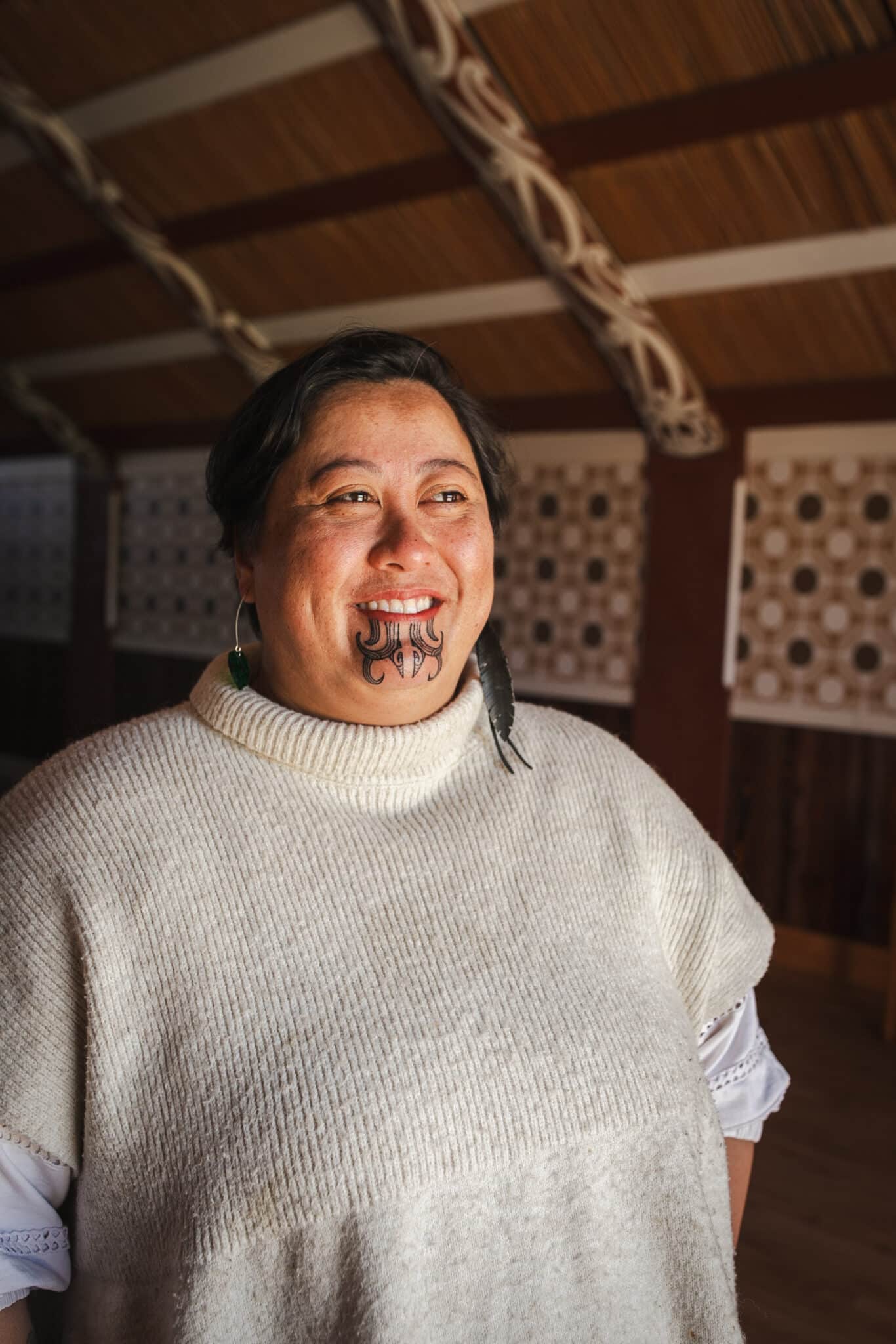
Something that had held me back was feeling trapped here in New Zealand – I felt like I wouldn’t be able to leave, and I yearn to go and be in other places. I haven’t always felt connected to this whenua – I feel really drawn to Alaska since I visited there over a decade ago. Even though I haven’t been able to travel back there yet, it feels more like home for me, and I still think about that place all the time. I also want to work in global business, and I felt like I would have to justify myself constantly – I already have to do that in my journey as a woman in leadership, always having to stand my ground, and that’s without the kauae!
Now that I have it, it just makes sense –everyone looks at me like it’s always been there. Just today I had someone say, “Can I ask you something? Have you always had that there?” I’ve felt more aroha and less challenge from all sorts of people since the kauae, and I’ve had people be more respectful and more curious in a kind way, in all sorts of settings – and people’s behaviour towards me has actually shifted.
This was quite a significant choice we made – wholeheartedly, with all of our being – to do this together. I have this weird little belief, maybe from maths or science, around us being like the triangle. The triangle is the strongest of all the shapes and can carry a lot of weight, and for us, that’s to move energy and change minds and hearts, and bring more into the kaupapa of mokopapa. While this is a really heavy kaupapa to carry, it’s easier to carry together than alone.
The whare tūpuna of Kererū Marae, which is called Mahinārangi
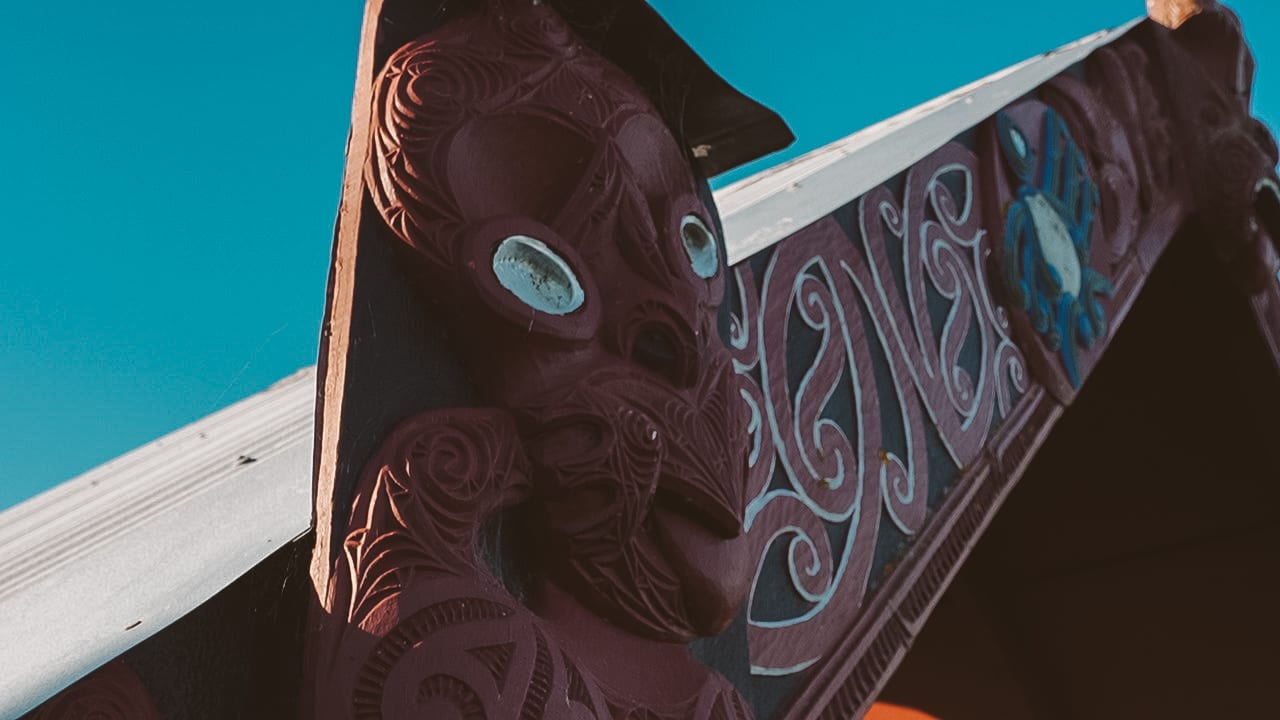
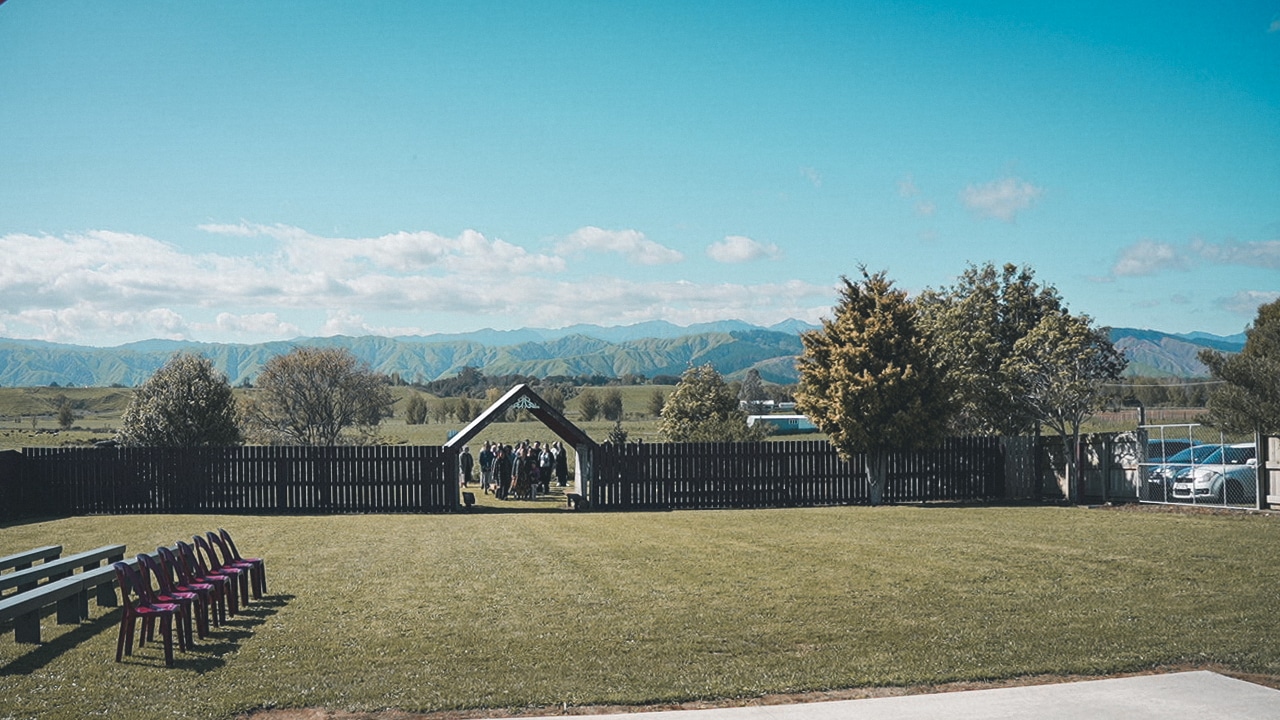
MONA PAULINE MANGAKĀHIA-BAJWA, 34
Kāi Tahu, Ngāti Kuia, Ngāti Raukawa, Rangitāne, Ngāti Koata, Te Āti Awa, Ngāti Kahungunu, Ngāti Marutuahu, Ngāti Tamaterā, He Hononga ki TeRarawa
I’ve had a yearning to wear my moko kauae for a long time. I can’t pinpoint when it started, but I could describe it as a grief. After we received our moko kauae, I realised what it was that I had been feeling – every time I would see other wāhine mau moko kauae, I would grieve for mine; there’s not really any other way to describe it other than it being like you’ve lost something. Whenever I thought about her – my moko kauae – I was sad because she wasn’t there, and it excited me every time I would see women with theirs. It got to the point where I’d had enough, I was not waiting anymore – to the point where I was jumping on the table to have it done!
I remember when my husband was on the table with Tipi Wehipeihana getting his legs done, I sort of flippantly said to him, “How do I go about getting a moko kauae with you?” and he said, “Just tell me when and I’ll be there.” In my mind, I had already decided – this is what I’m doing. I thought to myself, “Who else is going to come on this journey with me?” And so I posed the pātai to my mum and my sister. Mum and I were sitting in the car when I asked if she’d ever considered it; and then I spoke to Challen. With Mum it was easy, it didn’t take much persuading for her, but Challen was more apprehensive and, like she described, it took right up to two months prior to the event for her to really get there.
When we had that great raru between us, I said to them both, “You need to sort your shit out!” Because I didn’t want the next time we were all physically together to be one of conflict. The last time we were together at our marae was to grieve the passing of our father, and that in itself was monumental for us. It was one of the most significant events that has ever happened to us as a collective of wāhine, and it was transformational in ways that we would never, ever have known. We still continue to grieve for him, and figure our way through, because he really played a role in connecting us all – or managing us, as Mum says!
Mona-Pauline (far left), Challen (far right) and whānau supporting Darcia as she received her moko kauae. “I think about how there are people who have received moko in our whānau, and they aren’t necessarily events that we’ve come together for as a wider whānau, and I really wished that we could have that for our tamariki,” Mona-Pauline says.
“This was quite a significant choice we made – wholeheartedly, with all of our being – to do this together... While this is a really heavy kaupapa to carry, it’s easier to carry together than alone.”
Challen
We chose to have the mokopapa atthe marae because that’s where Dad’s tūpāpaku laid. He played an important part, and continues to play an important part, in the decisions we make. There has been a real severance for our people in relation to our culture and, in turn, our marae. There’s trauma and disconnect, and it stops them from coming to the marae. This is just one of the opportunities that we’ve had in our lifetime to be able to help knit that back together, not just me as an individual but all of us as a collective. And what this has done for our hapū was prompt a kōrero by one of our rangatira who said that we need to have more mokopapa, to encourage our whānau to have more mokopapa at our marae, to bring back that life to our pāthat has been lost for such a long time.
When it came to considering who our ringatoi would be, we went through a process together. When I went to reach out to a particular artist we’d resonated with, I couldn’t physically move my body to do it– so I knew at the time that that wasn’t the artist meant for us. However, when I went back to Tipi, it was like a relief to say to him, “Yes, we want to book in with you.”
Something that was important when I thought about the people I wanted to join us on our journey is that I wanted our whānau, and the ones that we love – and who actually love us – to be there. When we had our mokopapa, one of our cousins, who is a school teacher, had moko stencils. We had all these kids, with all sorts of whakapapa, running around with moko and just being so proud. My son came home and didn’t want to wash it off!
“Wearing moko, I can share with my tamariki that being Māori is all good,” Mona-Pauline says. “Doesn’t matter what any government says about you, about your reo; it doesn’t matter what anybody ever says to you or how they might harass you. They can stand in those situations and be absolutely comfortable and confident in themselves and their Māoritanga.
Each of us will have our own whakaaro about this, but I was really conscious – having worked in spaces with lots of Pākehā – to consider how we give them the opportunity in a safe way to engage with our culture, and take them along in the journey to experience how powerful it is; how it’s not just something written about in textbooks, but it’s actually a living being. There are a lot of our whānau – and when I say whānau I don’t just mean of shared whakapapa, but our whānau hapori – who have never had the opportunity to be on the marae. I don’t know that I purposely went out to say, “Oh yup, let’s have a mokopapa,” and it was a conscious decision, it was more wairua and tūpuna led – the way things kind of naturally happen and organically evolve. I remember watching a video of Rob and Cilla Ruha, and Cilla said that she wanted to make sure that her tamariki knew that it was normal and that it was okay and to show them – and the only way to show them is to lead that process for our tamariki. That was really poignant in my own decision – to say that if I want my tamariki to be comfortable in their own skin as young tāne Māori, there’s only one thing I can do, and that is to show them the way by doing this for them.
Glossary. Aroha, love. Awa, river. Hapū, kinship group, subtribe. Hongi, to press noses in greeting, the exchange of breath. Kai, food. Karakia, ritual, chant, prayer. Kauae/moko/moko kauae, a traditional chin tattoo worn by Māori women. Kaupapa, topic, subject, theme, programme. Kōhanga reo, Māori language preschool. Kōrero, conversation. Koro, grandfather. Kupu Māori, Māori word. Mamae, hurt, trauma. Marae, the open area in front of the wharenui, the complex of buildings around the marae space. Māreikura, noble or esteemed female, respected female. Māori tanga, Māori practices and beliefs. Mau moko kauae, wearing a moko kauae. Mokopapa, a gathering of individuals receiving their full face tattoo (men), legs/buttocks tattoo orchin tattoo (women). Pā, village. Pākehā, New Zealander of European descent, foreigner. Pātai, question. Rangatira, leader, person of high rank. Raru, conflict, fight, trouble. Ringatoi, artist. Tamariki, children. Tāne Māori, Māori man. Taonga Māori, things treasured by Māori. Te reo/te reo Māori, Māori language. Tūpāpaku, deceased person’s body. Tūpuna, ancestors. Wahine, woman. Wāhine, women. Wairua, spirit. Whakaaro, thought, opinion. Whakapapa, geneology. Whānau, family. Whānau hapori, wider family/friendgroup. Whanaungatanga, kinship, sense of family connection. Whare tūpuna, ancestral meeting house. Whenua, land.
If you enjoyed this story, please share with someone else.
This story appeared in the Ngahuru Autumn 2024 Edition of Shepherdess.
Get your hands on a copy.
Related Stories
Banoffee Bars
Thick peanut butter and banana mousse with a layer of crunchy dark chocolate and a vanilla oat shortbread.
